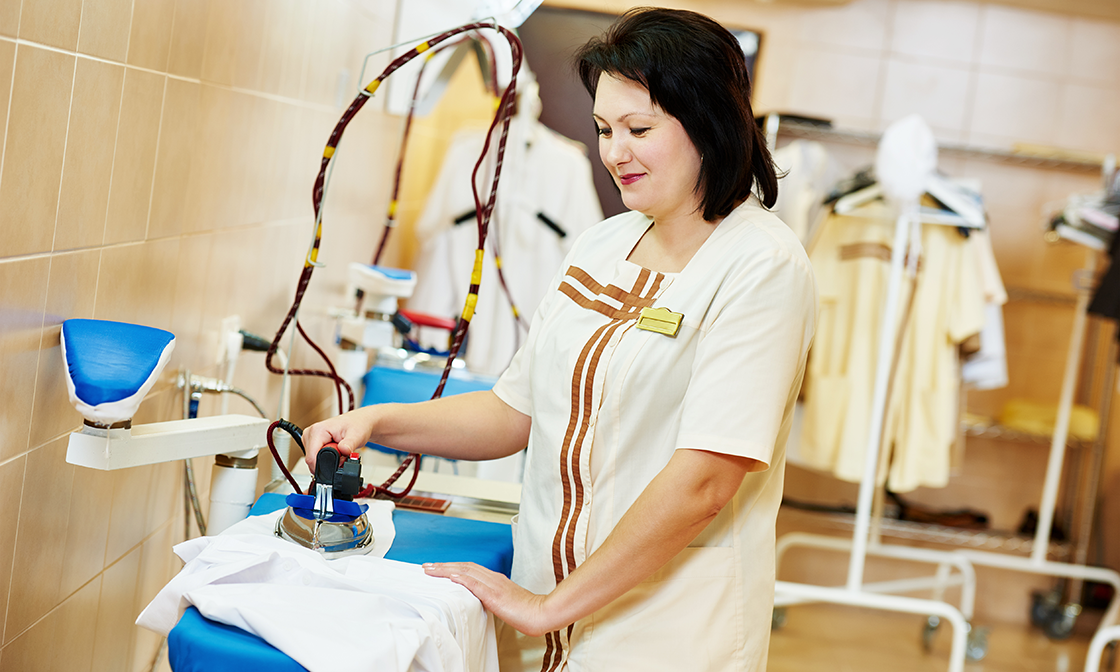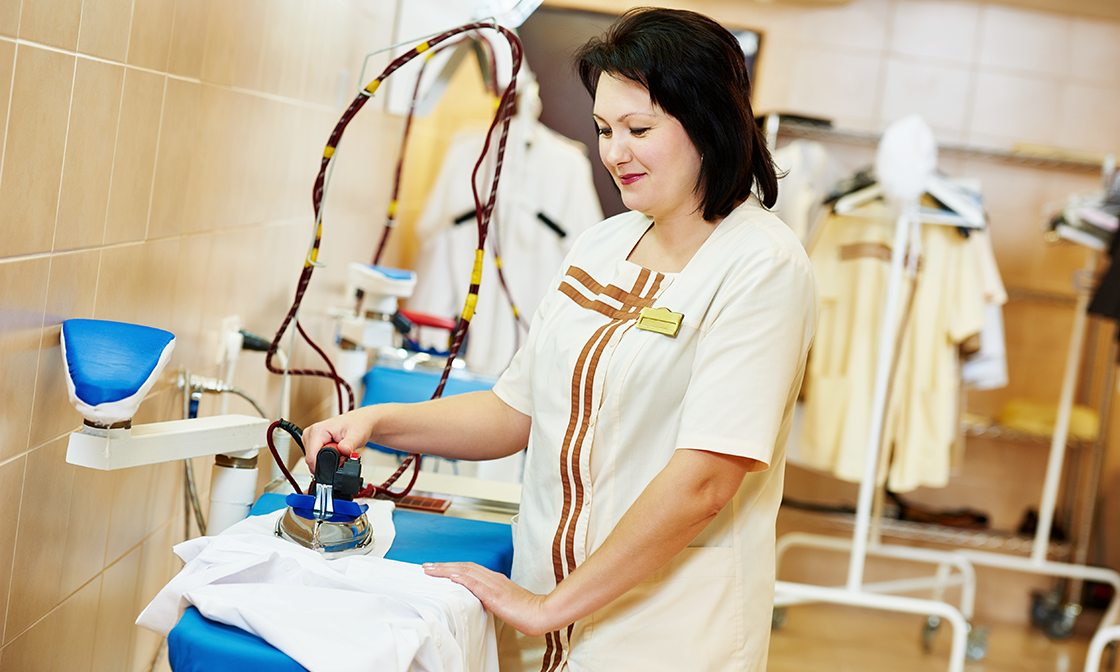Ironing can be a chore at the best of times. But if you own or operate a hotel, it’s a necessary part of housekeeping that helps to maintain that fresh, crisp look and feel that your guests expect and deserve from their linen.
Traditional ironing by hand is still widespread in the long term care and hospitality sectors. Even with the right tools and equipment, it can take up a significant part of your housekeeping team’s day. It would be beneficial to have a simple way to reduce this time strain.
Ironing is not an easy task either. It’s repetitive and tiring. These are some of the factors that make it a potential cause of musculo-skeletal disorders (MSDs). These cause aches and pains that lead housekeepers to suffer in silence or take time off work.
According to surveys conducted by U.S. Bureau of Labor Statistics, MSDs are found in almost every workplace. In fact, in many countries, MSDs are among the biggest causes of work-related injuries and time away from work. If unchecked, they can lead to long term suffering and even more severe health problems later in life. Many of the actions repeated during ironing – pushing, pulling, bending, stretching, lifting and lowering – can increase the risk of MSDs. It would be ideal to have something that could make ironing easier.
Many industrial sectors have identified significant occupational health, safety and productivity benefits by assessing the ergonomic aspects of their operations. Ergonomics can be applied to ironing because it deals with the movements that contribute to the overall task. In general terms, it can make your ironing simpler, safer and more efficient.
The simplest way to reduce risk in any situation is to modify the process to eliminate the underlying cause. In laundry settings this means making processes more ergonomic to reduce the number and intensity of the repetitive movements. This might include:
- Rotating tasks so that your housekeepers spend less time on each
- Resetting the height of the laundry board or table to the optimum position for the person who is ironing
- Eliminating static postures – occasional movements help prevent injuries
- Handling linen in trolleys rather than baskets to reduce the amount of bending to pick up items and to avoid carrying bulky and heavy loads by hand
These are simple steps that any responsible employer can make very easily and with little or no extra cost.
What about the properties of the linen that is being ironed?
The amount and severity of creasing produced during the wash phase will affect the time and effort needed to iron a particular item. Similarly, the resistance of the fabric to the motion of the iron caused by friction will affect the effort required. Thus, reducing the creasing and friction will make it easier to iron any piece of fabric.
Field trials we conducted showed that adding a simple product – Clax Deosoft Easy2Iron conc - to the laundry wash cycle instead of a traditional fabric softener can reduce the effort required during ironing by 30 percent. It accomplishes this by reducing the amount of creasing and by reducing the resistance of the fabric to the iron.
This is important for two reasons. First, your housekeeping staff will be able to complete ironing tasks more quickly but with less fatigue, which means that they can remain alert and productive for longer to maintain higher quality standards. Second, and just as important, they will be less likely to suffer from MSDs and similar conditions as a result of their work.
That has to be good news for everyone.



